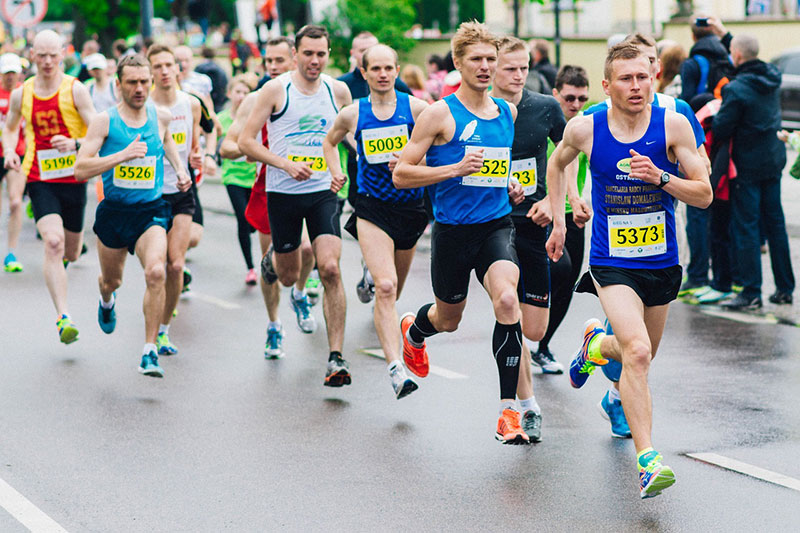Are you feeling the rush as you lace up your running shoes for your first marathon?
There’s nothing quite like the mix of excitement and nerves that comes with preparing for such an event.
As the big day approaches, it’s crucial to focus not just on running longer distances, but on running smarter.
In this article, we’ll dive into essential techniques to ensure your marathon training is as effective as possible.
We’ll explore why best practices are your best allies and highlight common pitfalls to avoid. After all, proper preparation is the key to enjoying every mile on race day.
Marathon Overview
Marathon training is more than just accumulating miles under your feet.
It involves strategic planning and a balanced approach to prepare your body and mind for the 26.2 miles.
From the scenic coastal views to the festive atmosphere, running a marathon in Bermuda is an experience unmatched.
But to truly enjoy it, you’ll need to follow best practices and steer clear of common training mistakes.
The Do’s – Build A Strong Foundation For Your Marathon
Start Slow: Begin your training with slower, shorter runs to build your endurance gradually. It’s tempting to push hard from the start, but gradual progression is key to avoiding injuries and burnout.
Why is it important?
Starting slow allows your body to adapt to the new demands of running. Sudden increases in intensity or distance can lead to injuries such as shin splints or stress fractures.
How do you implement this?
Begin with a mix of walking and running, gradually increasing the running intervals over weeks. For example, start with 1-minute runs followed by 2-minute walks, then slowly build up to longer running intervals.
Set a Training Schedule: Consistency is crucial. Outline a training plan that increases your mileage incrementally each week. This structured approach helps your body adapt to the increasing demands without overwhelming it.
Why is it important?
A structured plan helps to steadily build your endurance and strength, ensuring you can handle longer distances by the time race day arrives.
How do you implement this?
Follow a beginner’s marathon training plan, typically spanning 16-20 weeks, with 3-5 running days per week. Gradually increase your longest run each week by no more than 10%.
Choose the Right Gear: Invest in a good pair of running shoes and comfortable, breathable running apparel. Proper gear not only enhances your performance but also prevents issues like blisters and chafing.
Why is it important?
The right gear reduces the risk of injury and makes your runs more comfortable, allowing you to focus on your training.
How do you implement this?
Visit a specialty running store to get fitted for shoes that match your gait and foot shape. Opt for moisture-wicking fabrics for clothing to keep sweat away and prevent chafing.
Nutrition and Hydration: Fuel your body with a balanced diet rich in carbohydrates, proteins, and fats. Hydrate adequately before, during, and after your runs to maintain optimal performance and recovery.
Why is it important?
Proper nutrition and hydration support your energy levels, muscle repair, and overall health, which are essential for endurance training.
How do you implement this?
Aim for a diet with a good balance of macronutrients. Hydrate regularly, and consider carrying water or sports drinks during long runs. Practice fueling strategies with gels or snacks during your training runs.
Cross-Training: Incorporate activities like swimming, cycling, or yoga to improve your overall fitness and reduce the risk of overuse injuries. Cross-training helps keep the routine enjoyable and balanced.
Why is it important?
Cross-training enhances your cardiovascular fitness and strength without the repetitive impact of running, reducing injury risk.
How do you implement this?
Dedicate one or two days a week to cross-training activities. For instance, replace one run with a swim or bike ride, or include a yoga session to improve flexibility and strength.
Integrate Sports Therapy: Utilize sports therapy to enhance your training. Regular sessions can help strengthen muscles, improve joint stability, and address any underlying issues that might lead to injury. Techniques like targeted stretching and sports massage not only prepare your muscles for the strain of long-distance running but also speed up recovery, ensuring you’re ready for each training session.
Why is it important?
Sports therapy can prevent injuries and optimize recovery, ensuring you remain in peak condition throughout your training.
How do you implement this?
Schedule regular sports therapy sessions, such as massages or physiotherapy, particularly after long runs or if you experience any discomfort.
The Don’ts – Avoid These Common Marathon Mistakes
Avoid Overtraining: Listen to your body and recognize the signs of overtraining, such as excessive fatigue, decreased performance, or prolonged muscle soreness.
Don’t Neglect Rest: Incorporate rest days into your training schedule to allow your body to recover. This downtime is essential for muscle repair and growth and helps prevent injuries.
Don’t Skip Stretching : Regular stretching is crucial to maintain flexibility and reduce the risk of injuries. Incorporate dynamic stretching before runs and static stretching after.
Don’t Ignore Pain: Pain is your body’s way of signaling that something is wrong. Pay attention to any discomfort that doesn’t feel right and seek professional advice if it persists.
Additional Tips: Embrace Advanced Sports Therapy Techniques
For persistent issues or to enhance recovery, shockwave therapy can be highly effective.
This non-invasive treatment stimulates healing and reduces pain, particularly for chronic injuries.





